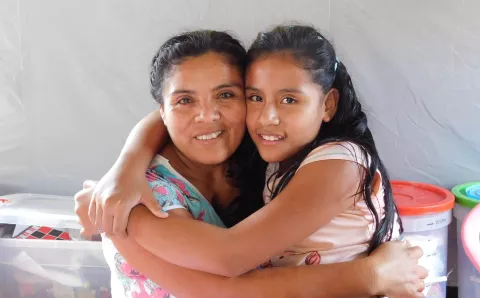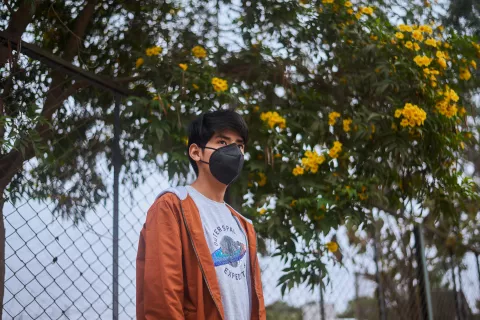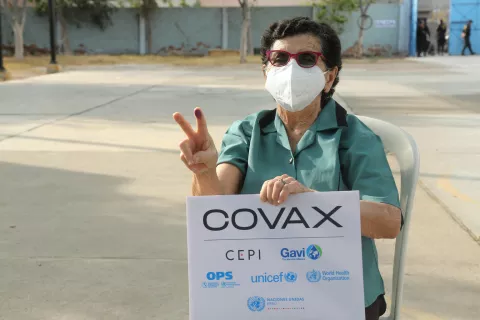In Peru, the sun helps vaccines keep their cool
Solar-powered freezers, procured through UNICEF, will help COVID-19 and other routine vaccines reach Peru’s remote communities.

- Available in:
- Español
- English
As COVID-19 vaccines start to roll out, Peru is preparing to deliver doses to millions of people from the Amazon to the Andes. In a country where one in five rural households doesn´t have access to electricity [1], storing vaccines at the right temperature can be a challenge.
Solar-powered refrigeration
Part of the solution to the problem recently arrived at a government warehouse in Lima: 1,100 solar-powered freezers, procured through UNICEF’s Supply Division. The freezers directly connect to solar panels without the use of batteries and regulators, making them ideal for remote communities with limited power supplies. The units will store COVID-19 and other routine vaccines.
“They came all the way by sea from Luxembourg. From here, in Lima, they will travel by plane and in some cases by boat to reach people in the rainforest and high in the mountains”
says Manuel Martínez, UNICEF Supply Consultant, who has worked closely with Peru’s Ministry of Health to oversee the delivery and inspect the freezers upon arrival.
In less time, at a better price
For over a decade, UNICEF has helped the Government of Peru procure lifesaving supplies at scale. In the coming months, over 10,000 additional cold chain units will arrive in Lima’s port.
“UNICEF plays a facilitating role, as we have signed long term agreements with suppliers that allow the rapid purchase of thousands of products – like the solar-powered freezers – at a lower cost”
says Ana de Mendoza, UNICEF’s Representative in Peru. “This has allowed the Government of Peru to get the supplies in less time and at a better price.”
Making sure no one is left behind
Like in many countries, the arrival of COVID-19 vaccines – and cold chain equipment to safely store them – marks a turning point for Peru, where the virus has infected over 1.3 million people, claimed around 50,000 lives [2] and pushed an estimated 3.3 million people, including 1.2 million children, into poverty.[3]

“Seventy-five years ago, UNICEF supported the reconstruction process after World War Two, and now we are supporting the reconstruction process in the pandemic”
says Ana de Mendoza. “It's important that the vaccines reach every corner of Peru and every corner of the planet, that no one is left behind. It’s the only way to save lives and start building a better future for all.”
[1] Instituto Nacional de Estadística e Informática, ‘Condiciones de vida en el Perú: Julio-Agosto-Septiembre’, INEI, Lima, 2020, , consultado el 8 de marzo, 2021.
[2] Ministerio de Salud, ‘Sala Situacional COVID-19 Perú’, 7 de marzo, 2021, , consultado el 8 de marzo, 2020.
[3] Pablo Lavado, ‘COVID-19: Impacto en la pobreza y desigualdad en niñas, niños y adolescentes en el Perú: Estimaciones 2020-2021’, UNICEF, Lima, 2020, , consultado el 8 de marzo, 2021.




